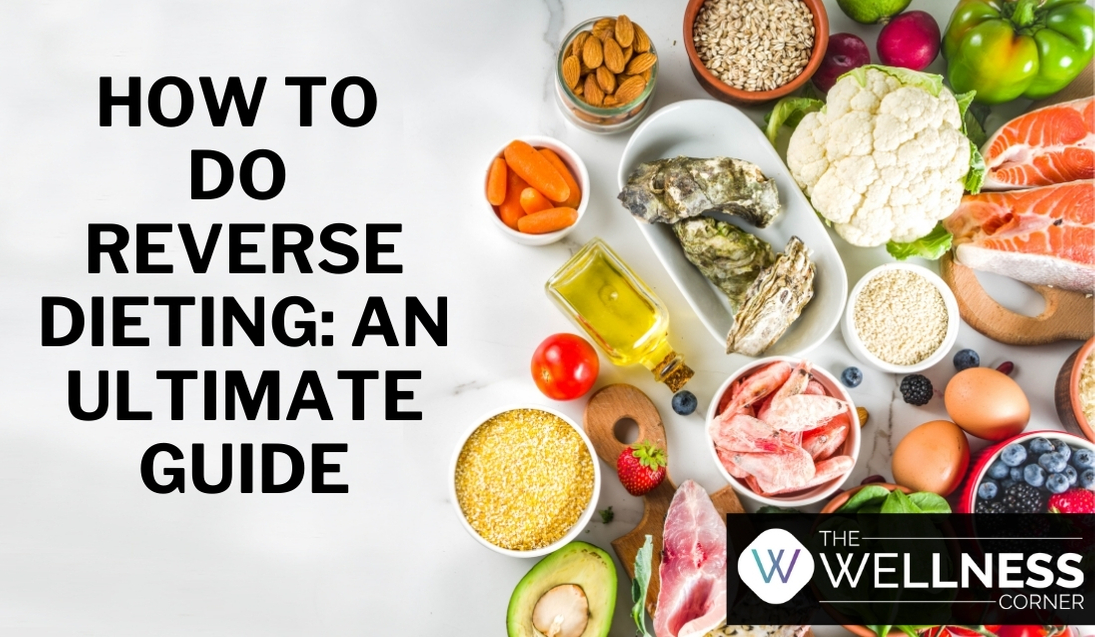How To Do Reverse Dieting: An Ultimate Guide
- 43 months ago
The terminology used in the bodybuilding world, reverse dieting seems like an unbelievable concept: eat more without gaining more weight. Yes, we understand the idea is too good to be true. Reverse dieting is all about techniques to add more calories to your diet while maintaining the same weight. Oh, we know you want to know more about it, which is why we brought you information related to reverse dieting and how it impacts your body.
What Is Reverse Dieting?
Reverse dieting is a technique that includes a slow and systematic increase in regular food intake for improving your overall health. Designed to encourage your metabolism and hormonal balance so that intake of more calories won't affect the weight of your body. While this may appear a one-way street to regaining more weight, this rather delivers a lot more than it seems - if done with proper guidance. More eating doesn't promise you losing fat or gaining muscles. Then, how does the reverse dieting do this magic on your body?
You may also like: Yo-yo dieting
How Does Reverse Dieting Work?
No, we are not going to provide a fairy reason as the results of reverse dieting are backed up by science. However, to understand this, let's consider the basic concepts of energy balance.
- Weight gain happens when you eat more calories (energy) than you burn.
- You lose weight when you eat fewer calories (energy) than you burn.
Also known as the calories in, calories out (CICO) concept, several elements affect energy out and in theory. Besides just food and exercise, these factors include stress, food absorption, metabolic adaptation, genetics, etc.
Reverse dieting focuses on the metabolic adaptation factor. It denies the starvation method as it leads to a decline in basal metabolic rate, energy, body weakness, and weakened digestive system. The reverse dieting technique believes that metabolic adaptation performs both ways. Also known as adaptive thermogenesis, if you increase your calorie intake, your body adapts in another direction and wastes additional calories as heat. So, if done strategically, reverse dieting helps improve your BMR, NEAT, workout capacity, and digestion system. However, to get the result, you need to increase the food intake gradually.
You may also like: 5 Incredible Water Therapies to Lose Weight
How To Reverse Diet?
Before going ahead, it is essential to understand the importance of reverse dieting. In order to prevent the risk of starvation mode, and balance your metabolism functioning, reverse dieting is fundamental. Here are simple steps you can follow for a strategic reverse dieting:
# 1 Track Your Calorie Intake
In order to fuel up your metabolism, it is important to keep track of your calorie target in the initial stage. Add 100 - 150 calories every day simply to calculate your calorie intake.
#2 Calculating Your Macro Targets
Macronutrients such as carbs, fats, and protein are key aspects of a reverse diet to boost your metabolism, gain muscles, and balance hormones. Get the protein diet equal to your body weight, manage your fats and carbs for better results.
#3 Monitor Your Progress
Keep track of your major metrics by weighing regularly, measuring your body areas, clicking pictures, and monitoring your body and workout performance.
You can do all of the above stated on The Wellness Corner app. Constantly monitor your calorie intake, calculate macronutrients along with exercises performed, mindful minutes and so much more at a single place.
You may also like: Diet Traps and Healthy Eating
Foods For Reverse Dieting
Well, we highly recommend you to keep a flexible dieting approach when it comes to reverse dieting. But here are few suggestions that can come in handy:
- Micronutrients (minerals/vitamins) enriched foods
- Meats, fruits, vegetables, yogurt, cheeses, beans, nuts, pasta, rice, bread, etc.
Although, reverse dieting often consists of foods with high in volume than calories. However, to satiate your hunger, you can have foods such as beans, potatoes, vegetables, and lean meats.
You may also like: Why crash diets may not work for you?
In A Nutshell
Chasing a strict diet for long whether it's starvation or a reverse diet is not beneficial and can lead to stress. Consult with a dietician for personalized plans on The Wellness Corner before bringing any key change in your diet to monitor your progress and get proper guidance throughout your weight loss journey. Follow the right workout routine to make your reverse diet more effective with our Wellness TV.








